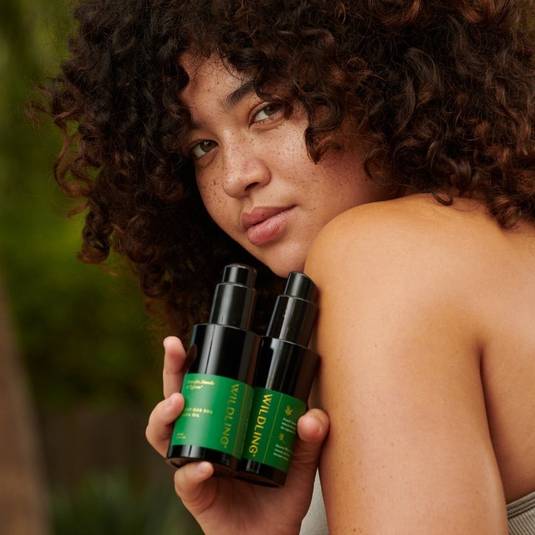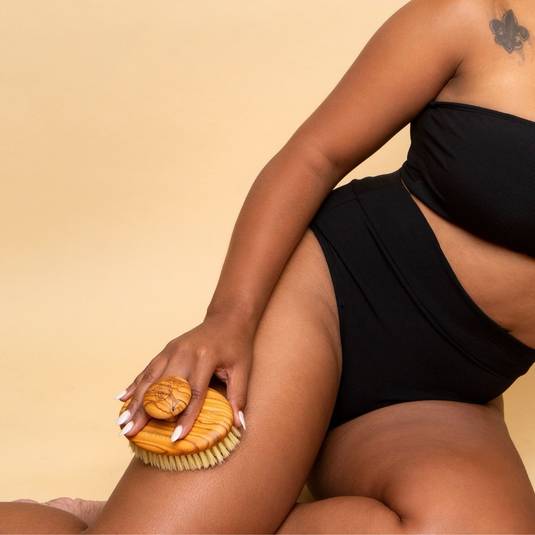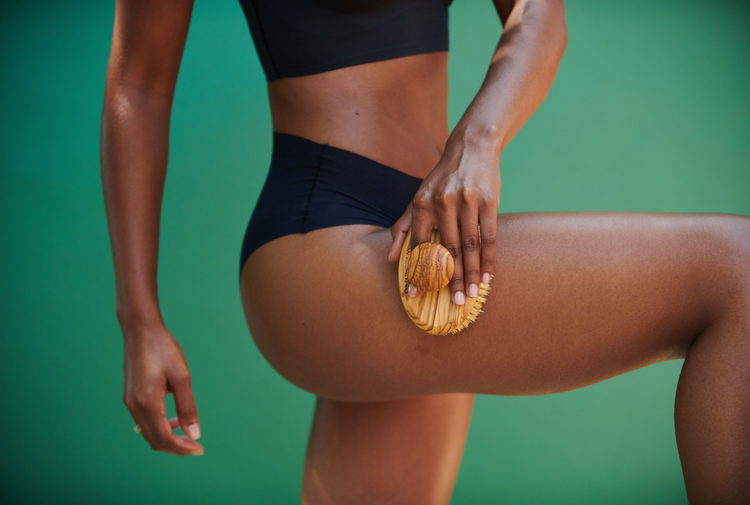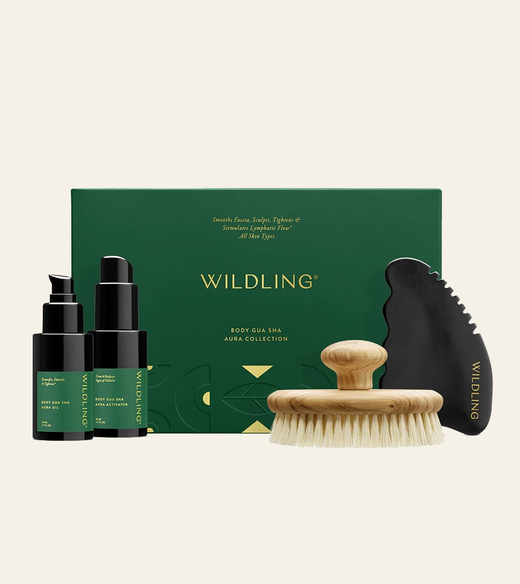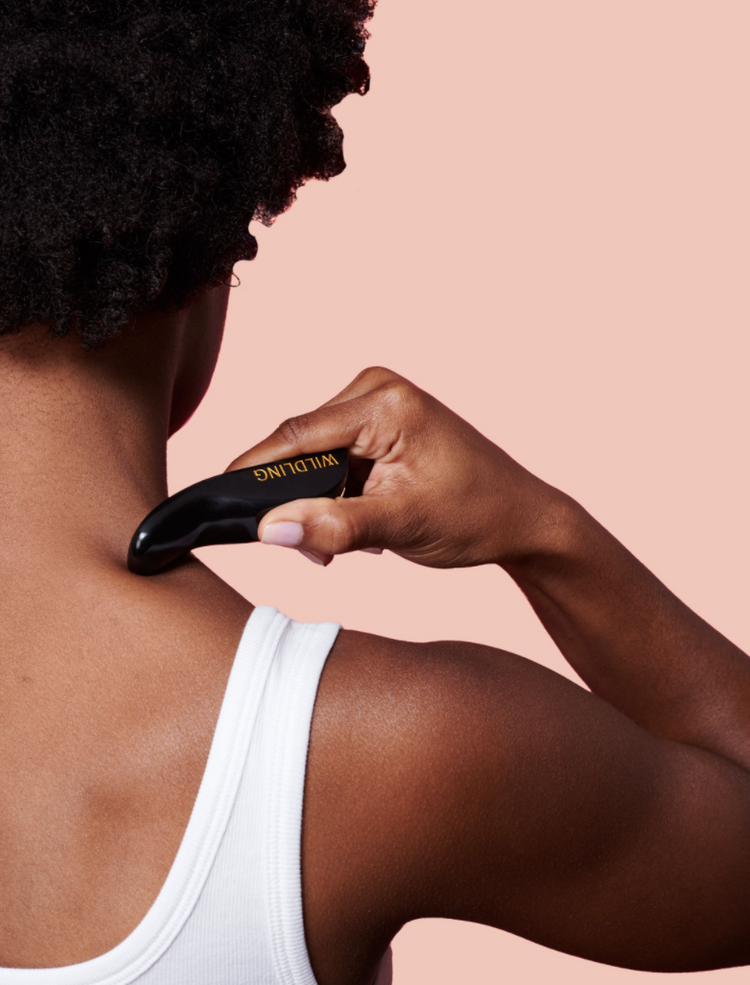Early on in the development of our Aura Collection, a few people around us thought that we should claim that the Aura method helps to diminish the appearance of cellulite. It certainly can, but that’s not why we decided to add it to the Wildling family.
The Aura Collection helps answer many body woes: muscle tension, pain, stagnation, and yes the skin’s appearance does change with time and repetition.
While there is absolutely nothing unhealthy about cellulite — let’s be real, all three of us founders have it and most human beings do too! — it can be a sign that the underlying fascia may be bunched, bound, or tight. Our mission isn’t to eliminate cellulite, but rather to use it as an indicator that some tension may be lying underneath.
WHAT IS FASCIA AND WHY DOES IT MATTER?
Fascia is a connective tissue in the body that encases your muscles, viscera, and layers of fat. If you were to look at a single person’s entire fascia, it’s like a continuous yellowish-whiteish glove that is roughly the shape of a human form. (If you’ve ever handled a chicken breast and peeled a filmy white “skin” away from the breast itself, you’ve touched a chicken’s fascia!) Within the fascia are individual strips that start and end at certain points in the body. In this way, one part of the fascia can affect another. Thomas Myers, one of the leading experts in fascia, calls this tensegrity — a balance of tension and structural integrity within this tissue.
Read more: The differences between facial gua sha and body gua sha, explained.
The thing is, healthy fascia can actually be a game-changer for pain, for your circulation and lymphatic systems, and for your skin’s outer appearance. We are just beginning to learn about the role of the fascia and specifically the interstitium — a layer of connective tissue and fluid that unites our body systems, organs, and functions. Scientists suspect that the interstitium furthers our understanding of acupuncture and why it works. We’re slightly obsessed with this emerging field of research and like to keep our fingers on the pulse of the science behind ancient healing modalities, mostly because we love watching it get the validation it has deserved for so long.
WHAT IS THE RELATIONSHIP BETWEEN FASCIA AND CELLULITE?
Cellulite occurs when fascial connections create little pockets of fat. Those (harmless!) pockets are separated by bunched and bound fascia… essentially fascia that’s become disorganized. This can happen when we sit for too long each day, when we overwork our bodies with the same repetitive motion, when we have bad posture habits, all can cause an imbalance in the fascia, especially as we age.
Our founder Gianna says that the areas she works on that feel more tender are often due to bound fascia. It can feel like mild pain, tension, or tightness.
THE PINCH TEST: HOW TO TEST YOUR OWN FASCIA?
One of the ways you can tell if fascia is bound is by trying the pinch test. It’s super simple! Give the area-in-question a little pinch between your thumb and index finger. If you’re not able to feel the skin come easily away from the muscle, it could mean the fascia there is bound. It’s time to try the Aura body ritual, which relies heavily on full body gua sha.
Read more: The origins and history of gua sha.
WHAT HAPPENS WHEN FASCIA IS HEALTHY?
Healthy fascia will look like layers in a cake — bound fascia can clog things up. It can stretch across layers, create deposits of subcutaneous fat, and The goal isn’t to erase cellulite. Cellulite is a way to listen to the needs of your body and tend to it in a way that might feel good. The ultimate goal of working with the fascia is to increase circulation and qi (pronounced “chee”) which is an ancient Chinese word that translates to life force. When we use the Aura Collection (with the right pressure, of course) we feel more glowy, more radiant, more pain-free, and less crunchy overall.
For tutorials on how to use your Aura Collection, visit our Instagram page.
Healthy fascia can actually be a game-changer for pain, for your circulation and lymphatic systems, and for your skin’s outer appearance.
